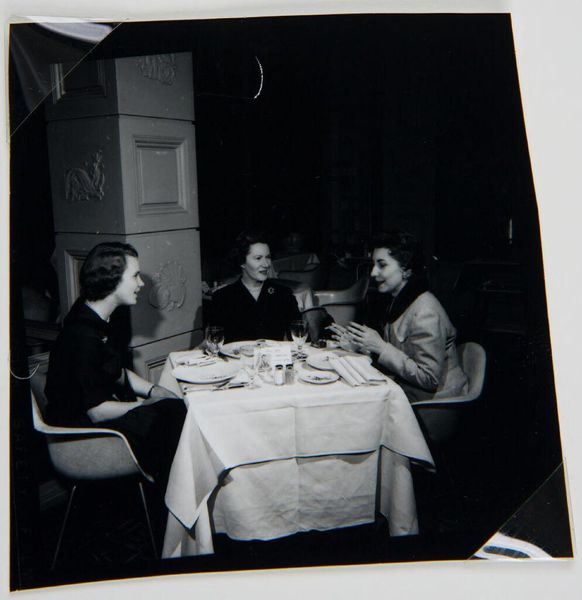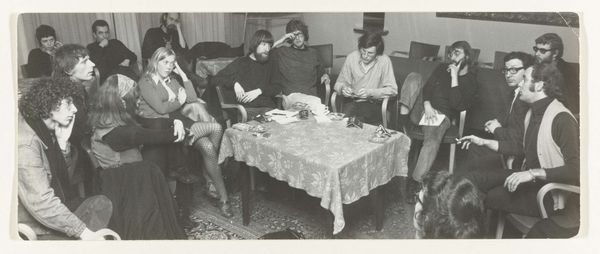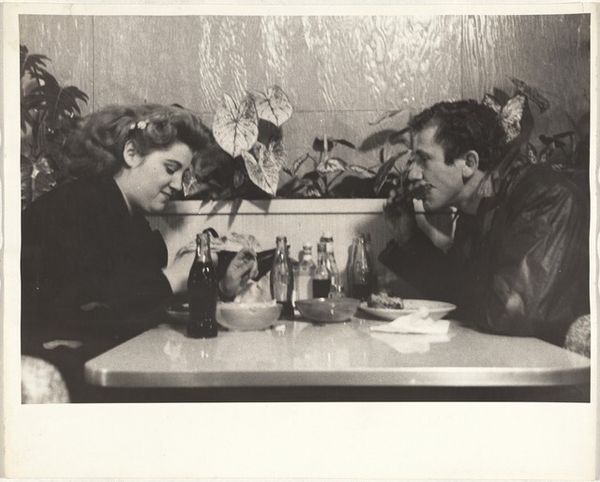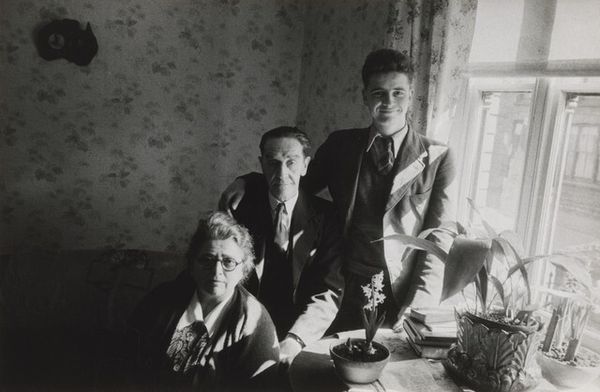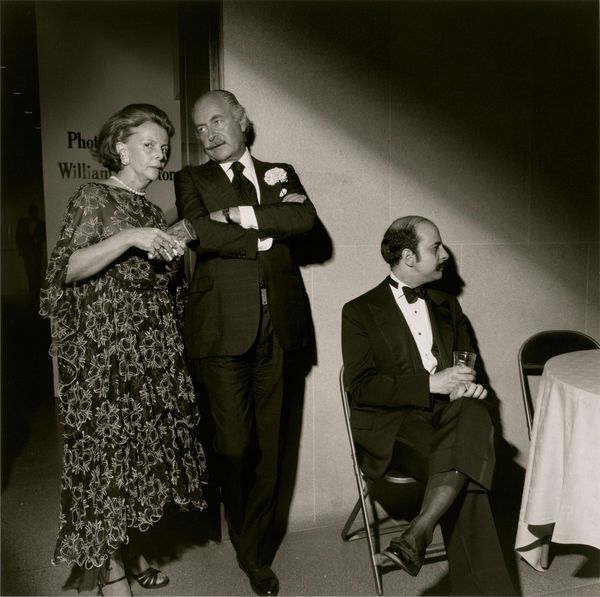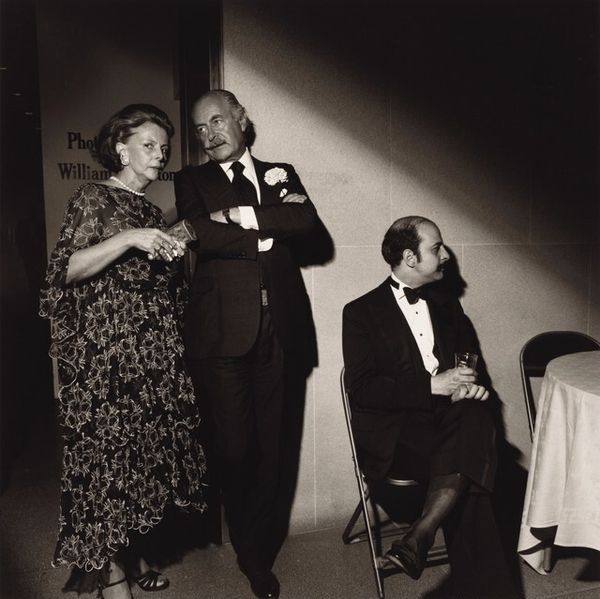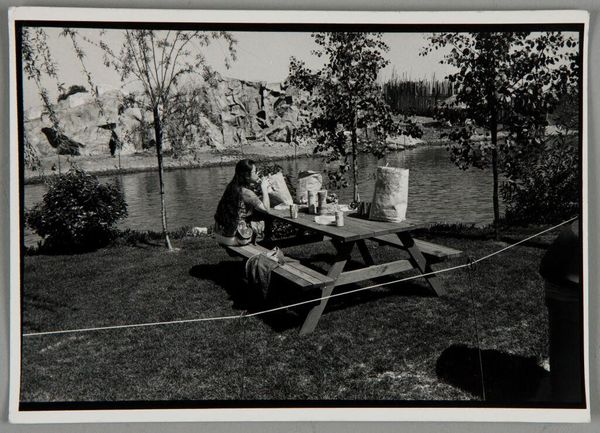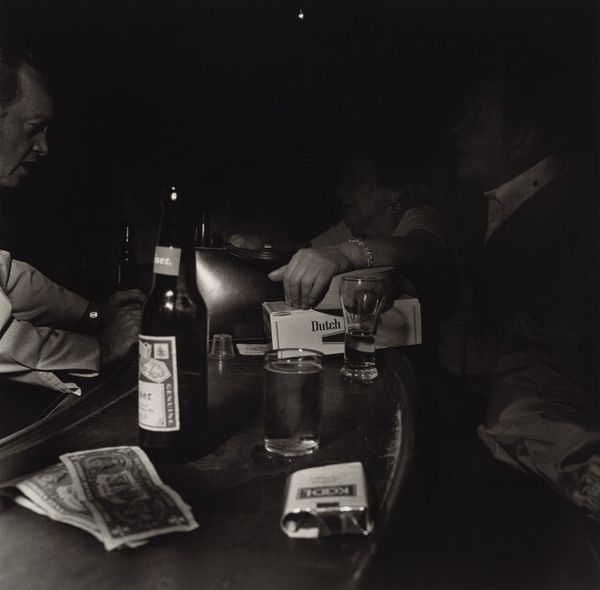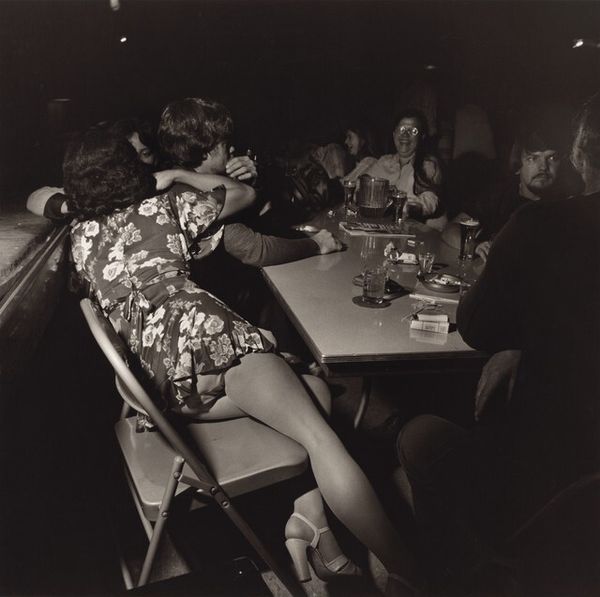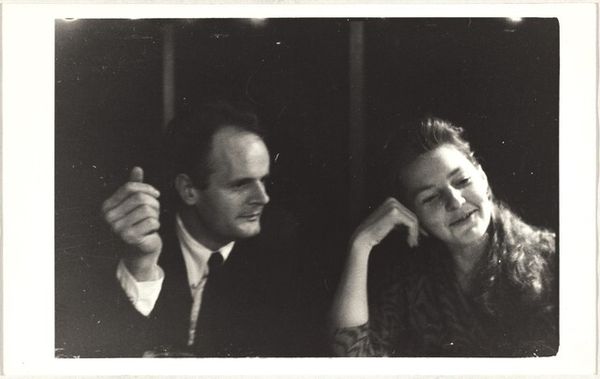
photography, gelatin-silver-print
#
portrait
#
portrait
#
photography
#
black and white theme
#
intimism
#
group-portraits
#
black and white
#
gelatin-silver-print
#
modernism
#
realism
Copyright: Andre Kertesz,Fair Use
Editor: Here we have André Kertész's 1933 gelatin silver print, "Chagall Family, Paris." It's a strikingly intimate portrait, the textures of the fabrics really catching my eye. What stands out to you in terms of the context and the making of this piece? Curator: What grabs me is the staged domesticity, really a manufactured intimacy given the impending crisis in Europe. Consider the labor involved – the tending of this garden setting, the creation of textiles, the sourcing and serving of this humble repast. Does it strike you as deliberately curated, down to the composition? Editor: Yes, there’s a definite intentionality. The way they're positioned, the objects carefully arranged... Is it meant to sell some sort of bourgeois stability? Curator: Precisely. But look closer at the materiality itself. The gelatin silver print process – it allows for sharp detail, which Kertész exploits to emphasize the almost unsettling gazes of the subjects. They’re selling comfort but look quite ill at ease. How much are they selling, and for what reason? Editor: That's a great point, that the method creates a starkness which contradicts the idyllic setting. The high contrast within this material really reveals every line. How did they access these techniques, what means were available to portray themselves this way? Curator: Consider Kertész's own immigrant experience. He photographs Chagall, another displaced artist, in *his* newly-adopted city. So, the act of creating this "family portrait" becomes a negotiation of identity and belonging in a quickly globalizing and extremely precarious art world. Editor: So, this image isn't just a portrait of a family, it’s also a commentary on the construction of identity within that environment? Curator: Exactly. It questions who has the means to portray themselves in certain lights, who consumes such images, and what narratives those images perpetuate and conceal. What stories are left untold? Editor: That completely changes how I see it. I was initially drawn to its apparent simplicity. Now I realize its actually addressing this complexity through materiality. Curator: Indeed. Focusing on those layers reveals the true, much richer picture.
Comments
No comments
Be the first to comment and join the conversation on the ultimate creative platform.
